
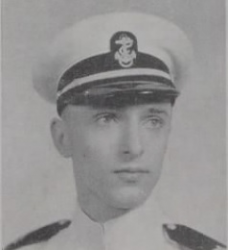 |
|
|
||
|
BERTRAM STETSON VARIAN,Jr. 'Bert' |
||||
|
Engagements: • World War II (1941 - 1945) |
||||
| Biography: | ||||
|
Bertram Stetson Varian, Jr. Ensign, United States Naval Reserve Navy Cross & Purple Heart BERTRAM STETSON VARIAN, Jr was the last of four children born to the Hon. Bertram S. Varian Sr. and Daisy Inez Vaughn Trent who married on 03 Dec 1904 in Dairy Farm Trent, Placer, CA. His siblings were Charles Lamertine, Florence Delome, and Nina Louise. Bertram Sr was a former Idaho State Supreme Court Justice. Bert Jr's grandfather, Charles Stetson Varian, was a Utah State Representative and prominent attorney. According to Bertram Sr.'s 1931 Son of the American Revolution (SAR) application Bertram Jr was born in Boise, ID, and according to Navy records he was born in Weis, ID. Bertram Jr was a direct descendant of James Varian, Captain of Minute Men who served in Colonel Drake's regiment in Westchester county, NY during the American Revolutionary War. Bert Jr., graduated from Boise HS, Boise, Ada, ID in June 1938. While in high school Varian participated in the Rifle Team and ROTC. According to the 1940 US Census for Boise City, Ada, ID, Bertram Jr had completed one year of college. Bert graduated with sixty-one other sophomores from Boise Junior College at the school's seventh annual commencement on 05 June 1940. At the time, it was the largest class to ever graduate. Not long after graduation, Bert could sense that the clouds of war were looming ever closer. The first round of the WWII draft registration was about to begin in October. So, he decided to submit an application for Aviation Training in the US Naval Reserve in the early fall of that year. He submitted required documentary data including: a birth certificate, educational records from high school and college, three letters of recommendation from persons of recognized standing in the community, a hand-written resume covering occupational and other experience, and a recent photograph of himself. In addition, he had to pass a physical and dental exam, and sit for an interview with the Naval Reserve Flight Selection Board (NRFSB) at Sand Point NAS, WA. The board assessed various aspects of Varian's character and educational qualifications to determine his potential as an naval officer and naval aviator. He received an overall numerical score that was compared to other applicants in his class to determine a final ranking among the group. His application would not be complete until he successfully passed the 30 day Elimination flight training (e-base) conducted at the Naval Reserve Aviation Base (NRAB), Sand Point, Washington. It was the last hurdle Varian had to face before the Board made its final decision on whether to recommend him to the Navy's Bureau of Navigation (Later Bureau of Naval Personnel) for selection as an aviation cadet. Varian qualified to enlist in the US Naval Reserve Flight Training Program (V-5). After securing his father's consent, Bert, who was not yet 21, enlisted for four years as a Seaman Second Class (S2c) (NSN:510-00-84), USNR, on 3 Dec 1940 in Boise, Ada, ID with the knowledge that if he failed to become a pilot he committed to serve four years in the US Naval Reserve in an enlisted status. He reported for temporary active duty undergoing E-base on 16 Dec 1940 at the NRAB, Sand Point, WA. Upon his arrival, S2c Varian received the standard navy uniform allowance issued to potential aviation cadets. It was 4 pair of underwear, 3 shirts, 3 pair of pants, 3 pair of socks, one pair of shoes, a flight jacket and a helmet and goggles. Varian successfully completed E-base which included a successful, short solo flight by the student. On 15 Jan 1941, Varian was released from temporary active duty under instruction and sent home to await further orders. Meanwhile, the NRAB sent his completed application package to Washington DC for final adjudication by the Bureau of Navigation. In early February, Varian received orders by mail from the Secretary of the Navy to report to the Commandant, Naval Air Station (NAS), Pensacola, FL to begin flight training as an aviation cadet. He transferred from NRAB, Sand Point on 14 Feb 1941 and reported to NAS Pensacola on 20 Feb 1941 whereupon he was honorably discharged from enlisted status to accept an appointment as an aviation cadet. Varian took the oath of office and accepted the appointment as an aviation cadet the following day, 21 Feb 1941, with a date of rank of 15 Feb 1941. He was assigned to Aviation Cadet Class 163-C. Over the next 8 months, Varian completed intermediate flight school at Pensacola and 4-6 weeks of advanced squadron training at NAS Miami (Opa-Laka) for pilots assigned to fly carrier-based aircraft. While he was at NAS Miami, Varian was designated a naval aviator (heavier-than-Air) effective 8 Sep 1941. Aviation cadet Varian took the oath of office and accepted a commission as an Ensign, A-V(N), United States Naval Reserve on 04 Oct 1941 with a date of rank of 04 Aug 1941. He detached from NAS Miami with orders to active duty involving flying with Bombing Squadron Six (VB-6), embarked on board the aircraft carrier, USS Enterprise (CV-6). He was to proceed to VB-6 after a period to count as leave, after which he was to report to the Advanced Carrier Training Group (ACTG), Pacific Fleet, San Diego for 6-8 weeks of temporary duty flying fleet-type planes and carrier-landing qualification. Because of the dramatic increase in enlistment of aviation cadets, the training at ACTG, Pacific was delayed. Varian completed the ACTG training in late Feb 1942 and boarded the transport ship, S.S. President Hoover, in San Francisco bound for Hawaii. On board Hoover were thirty or so ACTG graduates from Norfolk, VA as well as ACTG, San Diego. After a weeks steaming, the Hoover reached Honolulu about 01 Mar 1942 where the ACTG graduates disembarked and traveled across the Island of Oahu to NAS, Kaneohe Bay. Many of the replacement pilots from the ACTGs did not have orders to a specific squadron prior to their arrival in Hawaii. They were assigned to fill pilot shortages in various squadrons including Scouting Six (VS-6), and Lcdr Max Leslie’s bombing Three (VB-3). Ens. Varian already had orders for VB-6. Enterprise returned to Pearl Harbor from the Marcus Island raid on 10 Mar 1942 with her squadrons landing on Oahu ahead of her. Ensign Varian reported for duty with VB-6 on 11 March 1942. Also reporting with him from the ACTGs were Ensigns Stephen Hogan, Don Ely, Harry Liffner, George Goldsmith, Gene Greene and Lewis Hopkins. For the next three weeks, VB-6 commanding officer, Lt Dick Best, trained his new pilots in bombing exercises against land targets and practice carrier landings ashore. Enterprise got underway on 01 Apr for several days of training and squadron carrier landing qualifications. Ensign Varian made his seven landings on Enterprise to become “carrier qualified.” Enterprise and her air group returned to Pearl Harbor on 3 April. However, it wasn’t long before Air Group Six was placed on 2-hour sailing notice on 07 April. The “Big E” steamed out of Pearl Harbor on 08 April for a mission shrouded in secrecy. Normally, the mission was divulged to the crew on the first night at sea, however, Admiral Halsey kept this mission a secret. On the morning of 13 April, USS Hornet’s task force appeared on the horizon, her deck sporting many strange looking aircraft. Later that evening, Admiral Halsey dispelled all the rumors by announcing the task force was proceeding on a mission to bomb the Japanese mainland. From that day forward, Enterprise would provide combat air patrol (CAP) coverage as well as reconnaissance flights until Hornet launched Doolittle’s 16 B-25s on 18 April 1942. Enterprise and Hornet returned to Pearl Harbor on 25 April. On 29 April 1942, Enterprise got underway to conduct training exercises northwest of Oahu. After several days of aviator carrier qualifications, Enterprise and Hornet were directed to the South Pacific to assist aircraft carriers USS Lexington (CV-2) and USS Yorktown (CV-5) engaged in the battle of the Coral Sea. The battle was over before they could arrive on-scene. CV-6 was then directed to perform a feint towards Nauru and Banaba (Ocean) islands which caused the Japanese to delay Operation RY to seize the two islands. Enterprise returned to Pearl Harbor on 26 May and began intensive preparations to meet an expected Japanese thrust at Midway Island. Enterprise got underway from Pearl Harbor on 28 May 1942, and with Hornet, steamed toward a point Northeast of Midway called "Point Luck." USS Yorktown (CV-5) followed a short time later. Early on the morning of 4 Jun 1942, the Enterprises' air group (launched 0700) along with those from the USS Hornet (CV-8) and USS Yorktown (CV-5) launched their strike packages to intercept and attack the Japanese carrier fleet approaching the Midway Atoll. VB-6 with only 15 SBDs including Ens. Bert Varian and his rear-seat gunner, Aviation Radioman Third Class (ARM3) Charles Robert Young, flying in 6-B-18 in VB-6’s Third Division, 18 SBDs from Scouting Six (VS-6) and the CEAG McClusky’s section of three SBDs launched, formed up, then circled the task force waiting for Fighting Six and Torpedo Six to launch. Twenty minutes passed with little visible activity for a VT-6 and VF-6 launching. Meanwhile the SBDs, carrying a heavy load of bombs, were using up valuable fuel. Finally, at 0745, Lcdr McClusky was instructed to "proceed on mission assigned." The unnecessary expenditure of fuel by all the Enterprise Air Group was to have deadly consequences later in this mission. After nearly 3 1/2 hours in the air searching for the enemy, the CEAG finally spotted the Japanese carrier fleet with the unintended assistance of Japanese destroyer Arashi. The SBDs of VB-6 and VS-6 were near fuel exhaustion. Lcdr McClusky issued “vague” orders to Lt Best and Lt Gallaher on which carriers to attack. Apparently, Lt Best didn't receive the orders and Lt Gallaher misinterpreted the orders. As the attack on Kaga began at 1020 near disastrous confusion resulted between Lt Best leading VB-6 and Lt Gallaher leading VS-6 on which target, Kaga or Akagi, each squadron was to attack. Consequently, 27 of the 30 SBDs from both squadrons, including Ens. Varian, attacked Kaga. Kaga was hit multiple times and suffered the effects of many near misses. Only VB-6 Squadron commander, Lt Dick Best (S-B-1) and his two wingmen, Ltjg Edwin Kroeger (S-B-2) and Ens. Frederick T Weber (S-B-3) attacked Akagi beginning about 1025. Lt Best’s one direct hit with his 1,000 lb bomb doomed the Japanese navy’s largest carrier of her day. She was scuttled the next day. As they pulled out of their dives, the American planes were met with a barrage of anti-aircraft fire and swarming Zero fighters as the SBDs tried to quickly exit the battle field. After the attack Ltjg Vandivier (6-B-14), Ltjg Roberts (6-B-5), and Ens. Halsey (6-B-6) joined up, followed by Ens. George Goldsmith (6-B-15) on the flight back to Enterprise. The group was quickly attacked by Zeros that made about six runs on the American planes. Two more VB-6 SBDs joined with Vandivier; Ltjg Edward L "Andy" Anderson (6-B-16) and Ens. Bert Varian (6-B-18). The Zeros did a lot of damage to the planes of Vandivier's group. Ensign Varian's SBD was one of several to be hit by machine gun fire in his fuel tank. First to ditch was Ensign Halsey. He ran out of fuel. He was seen with his gunner getting into their life raft. Vandivier and several others circled Halsey to make sure he was ok. Varian and Anderson flew on. Soon, Ltjg Van Buren joined the group and took the lead. Ten minutes after the Zeros left, Vandivier signaled he was going down because of fuel exhaustion. Vandivier and Keaney made a safe water landing and got into their life raft as confirmed by Ens. Goldsmith who circled above them. Five minutes later, Van Buren and his gunner made a water landing and were seen manning their life raft. Then Bert Varian went down and made a good water landing. The crew of S-B-18 were seen to climb into their yellow rubber life raft. Next, Ens. Ramsey went into the water about 15 miles short of the Enterprise. He and his gunner, AMM2 Sherman Duncan, survived an week-long ordeal on the sea in their life raft before finally being rescued by a Midway PBY on 12 June. Ens. Hopkins was the last SBD from the morning strike to land on board Enterprise at 1210 with only a wisp of fuel remaining from the original 310 gallons. He had been in the air for over 5 hrs. Varian, Halsey, Van Buren and Vandivier and their rear-seat gunners all made successful water landings and were seen manning their life rafts, however, none were ever found. On 18 Jun 1942, the parents of Ens. Varian received a telegram informing them that their son was killed in action during operations against the enemy. Several days later, the Navy Department sent a corrective telegram stating that Ens. Varian was missing in action. He was officially missing in action on 4 Jun 1942. His remains were unrecoverable. On 5 Jun 1943, Ens. Varian was presumed dead. Ensign Varian was awarded (posthumously) the Navy Cross, the Purple Heart, Presidential Unit Citation w/ribbon, American Defense Service Medal, Asiatic-Pacific Campaign Medal with two bronze battle stars and the World War II Victory Medal. --------------------------------- Navy Cross Citation: The President of the United States of America takes pride in presenting the Navy Cross (Posthumously) to Bertram Stetson Varian, Jr., Ensign, United States Naval Reserve, "for extraordinary heroism and distinguished service as pilot of an airplane of a bombing squadron in action against enemy Japanese forces in the battle of Midway during the period of June 4-6, 1942. Disregarding extreme danger from concentrated anti-aircraft barrage and heavy fighter opposition, Ensign Varian, with bold determination and courageous zeal,participated in the initial dive-bombing assault against Japanese naval units. Flying at a distance from his own forces which rendered return unlikely because of probable fuel exhaustion, he pressed home his attacks with utter disregard for his own personal safety. His gallant intrepidity and loyal devotion to duty contributed in a large measure to the success of our forces and were in keeping with the highest traditions of the United States Naval Service." Source: Bureau of Naval Personnel Information Bulletin No. 309 (December 1942) Exact citation language retrieved from newspaper, The Spokesman-Review (Spokane, WA) - 13 Nov 1942, Fri - p. 3 ----------------------------------------- USS Enterprise Presidential Unit Citation reads: For consistently outstanding performance and distinguished achievement during repeated action against enemy Japanese forces in the Pacific war area, 7 December 1941, to 15 November 1942. Participating in nearly every major carrier engagement in the first year of the war, the Enterprise and her air group, exclusive of far-flung destruction of hostile shore installations throughout the battle area, did sink or damage on her own a total of 35 Japanese vessels and shot down a total of 185 Japanese aircraft. Her aggressive spirit and superb combat efficiency are fitting tribute to the officers and men who so gallantly established her as an ahead bulwark in the defense of the American nation. Actions of the Enterprise listed in the citation include the Gilbert and Marshalls Islands raid of 01 Feb 1942; Wake Island raid, 24 Feb 1942; Marcus Island raid, 04 Mar 1942; Doolittle Raid, 18 April 1942; Battle of Midway, 4-6 Jun 1942; Occupation of Guadalcanal, 7-8 Aug 1942; Battle of Stewart Islands, 24 Aug 1942; Battle of Santa Cruz Islands, 26 Oct 1942; and Battle of Solomon Islands, 14-15 Nov 1942. ----------------------------------- His family also received a commemoration from President Franklin D. Roosevelt. It reads: In grateful memory of Bertram Stetson Varian, Jr., who died in the service of his country, at SEA, Pacific Area, ATTACHED U.S.S. ENTERPRISE, 5 JUNE 1943 (Presumed). He stands in the unbroken line of patriots who have dared to die that freedom might live and grow and increase its blessings. Freedom lives, and through it, he lives -- in a way that humbles the undertakings of most men. (Signed) Franklin D. Roosevelt, President of the United States ------------------------------------------- The Post-Register (Idaho Falls, Idaho) - 18 Jun 1942, Thu - p. 9 "Boise Boy Killed in Action" Boise, June 18. The navy Thursday advised former Idaho Supreme Court Justice and Mrs Bertram S. Varian of Boise their son, Ensign Bert Varian, a naval flying officer had been killed in action on June 4. Young Varian was a graduate of Boise junior college. He received his flying training at Pensacola, Fla. ---------------------------------- The Post-Register (Idaho Falls, Idaho) - 21 Jun 1942, Sun - p. 3. Young Varian 'Missing' Boise, June 20. -- Ensign Bert Varian, Jr., reported by the navy as killed in action, is "missing in action" instead, his parents were informed here in a corrective telegram from the savy (sic) department. The father, Bertram S. Varian is a former state supreme court justice. ----------------------------------- The USS Varian (DE-798) was named in his honor. She was a Buckley class destroyer escort that was launched and christened on 6 Nov 1943. Sponsored by Mrs Arnold F. (Florence D.) Brunkow, sister of the late Ens. Varian. USS Varian was commissioned on 29 Feb 1944. She was first assigned to Atlantic convoy escort duties then was a member of a submarine "hunter-killer" group formed in late 1944 to track down and destroy enemy submarines. On 15 Jan 1945, Varian and several other ships in her group depth charged and sunk the U-248 then several months later they forced the U-546 to the surface where it was sunk by gunfire. Five days after the official end to the European war on 7 May 1945 Varian put a boarding party on board the U-805 and brought her to the east coast. Varian was decommissioned on 15 Mar 1946 and was finally struck from the Navy list on 1 Dec 1972. It was sold for scrap on 12 Jan 1974. VARIAN received two battle stars for her World War II service. ------------------------------------ Task Force 16 Citation Recognizing its contribution to the Doolittle Raid, 18 April 1942 On the occasion of the 50th anniversary of the Second World War, it is appropriate that we take time to reflect on the unique and daring accomplishments achieved early in the war by Task Force 16. Sailing westward under sealed orders in April 1942, only four months after the devastating raid on Pearl Harbor, Task Force 16, carrying sixteen Army B-25 bombers, proceeded into history. Facing adverse weather and under constant threat of discovery before bombers could be launched to strike the Japanese homeland, the crews of the ships and LTC Doolittle's bombers persevered. On 18 April 1942 at 14:45, perseverance produced success as radio broadcasts from Japan confirmed the success of the raids. These raids were an enormous boost to the morale of the American people in those early and dark days of the war and a harbinger of the future for the Japanese High Command that had so foolishly awakened "The Sleeping Giant." These exploits, which so inspired the service men and women and the nation live on today and are remembered when the necessity of success against all odds is required. (Signed) John H.Dalton Secretary of the Navy 15 May 1995 ------------------------------ Combat Action Ribbon (CR) note: Navy/Marine flight crews in the Battle of Midway (or any combat) were not eligible for or were awarded the Combat Action Ribbon (CR). See Navy and Marine Corps Awards Manual (SECNAVINST M-1650.1 of 16 Aug 2019, Appendix 2C.1.c (3) Amplifying Guidance). It reads in part, “The CR will not be awarded in connection with aerial flight, . . . “ The CR was established in 1969 and made retroactive to 07 Dec 1941. According to the Awards Manual, when deemed appropriate, the award for aerial combat was/is the Air Medal. ----------------------- [Bio#254 composed 24 Jun 2016, updated 01 Jan 2023 by Gerry Lawton (G47)] Find A Grave Memorial ID #56134261 |
||||
| Honoree ID: 103682 | Created by: MHOH | |||
Ribbons
Medals
Badges
Honoree Photos
 | 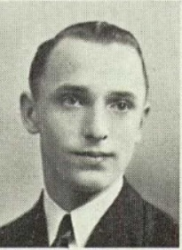 | 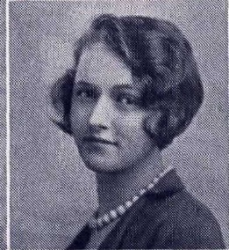 |
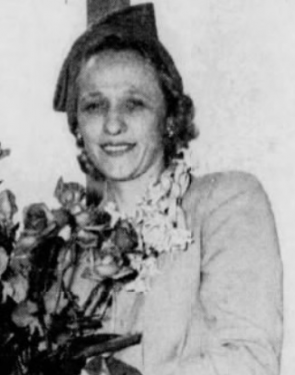 | 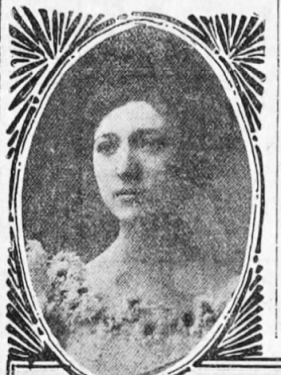 |
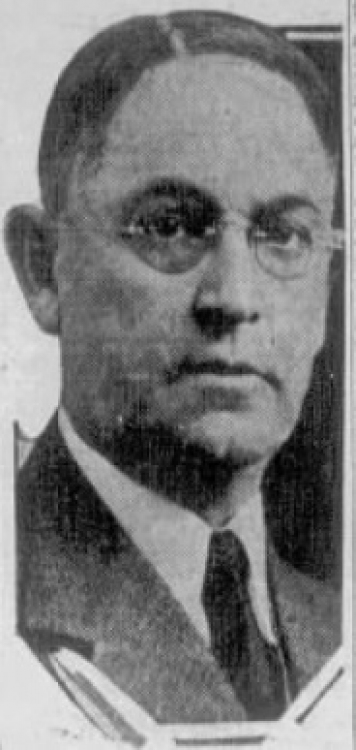 |


